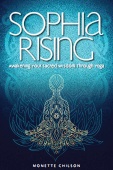Today’s post is by Kimberlee Conway Ireton, author of The Circle of Seasons: Meeting God in the Church Year and a newly released memoir, Cracking Up: A Postpartum Faith Crisis, from which this post it excerpted.




It’s a perfect Sunday afternoon: quiet, and I’m alone. Only I’m not alone—there are two babies doing the rumba on my bladder. I sit on the sofa, my journal open on my lap, and stare out the window. I feel restless, like I ought to be doing something, but my body won’t let me. I just got winded climbing the stairs from the basement—and that was after I’d napped for an hour.
So I got out my journal, thinking that I would write, but I’m so tired I can’t even think what to say to the page. My life feels bereft of things to write about, other than the babies and how tired they’re making me and how sad I feel that my novel is lying in the basement collecting dust. And honestly? I’m tired of writing about that day after day after day.
Last week, when I met with my spiritual director, she asked me where God’s been meeting me lately. I told her, “I feel like jotting down the grace notes is helpful, like it’s a good, important discipline for me. It helps me to not be so anxious, which is huge, but—”
I shrugged “—I wonder if it’s really enough? I mean, a lot of the time, these things I’m writing down don’t feel like grace. They feel like they could happen to anyone, you know? Which doesn’t mean it’s not grace. I know it is. But—” I shrugged again “—it just doesn’t feel like it, so I don’t feel particularly grateful for them. And I certainly don’t feel joyful, the way all those verses say you should: rejoice in the Lord always and all that. I mostly just feel tired.”
I paused for a moment. I wanted to say, “And I feel angry that because of these babies, I’m not able to write as much as I’d like.” I wanted to say, “I feel like this whole year of trying to find an agent for my novel was wasted.” But after my conversation with Laura on Holy Saturday, when she so flippantly dismissed my need to write, I hadn’t wanted to talk about that with anyone.
“And I feel—” I searched for a safer word than angry “—disappointed. And discouraged. I’m having a hard time letting go of my writing dreams, you know? And I feel like it shouldn’t be this hard, like I should just buck up and deal.”
Margie’s voice was gentle when she spoke. “Kimberlee,” she said, “you’re pregnant. With twins. Of course you’re tired. And it’s always hard to give up a dream. Don’t be too hard on yourself.” She looked out the window a second. “And you know, N.T. Wright often translates the word rejoice as celebrate. Celebrate in the Lord always. Maybe that distinction will help you.”
I gave her my best I’m-tracking-with-you look, but really, I wasn’t tracking. She waited for me to say something, so I had to say, “I’m sorry. I don’t understand what the difference is.”
“Oh, I don’t know that there’s much of a difference in what the words mean. I just think that joy sounds to our postmodern ears like an emotion, something you feel, whereas celebration is something you do. And since you can’t change how or what you feel—it’s not like you can force yourself to feel joy—it might be better to focus on what you do, on how you’re actually living, rather than what you’re feeling or not feeling.”
“So,” she continued, “how do you celebrate? How do you recognize the holiness in the ordinary?” She smiled. “Or maybe just how do you see God in the midst of your tiredness and disappointment?”
As I sit here on the sofa and stare out the window at the spirea, I ponder Margie’s questions. A bee buzzes around the tip of a spirea branch and lights on the top leaf. I know this is just a season, and a relatively short one—but I’m still frustrated by my lack of energy. I’m frustrated that given this blessed hour of silence and aloneness, all I can do is sit on the sofa and stare at a bee on a leaf.
I want to cry. It’s so frustrating to feel so stuck, so exhausted, so mentally enervated. But really, crying is too much effort. So I watch the bee. It buzzes down to a lower leaf. At least, I assume it’s buzzing. I can’t actually hear it.
Come tomorrow, I’ll have eleven weeks till I’m full-term. And eleven weeks after that to get my sea legs on this crazy voyage of parenting twins. And eleven more weeks after that before I’m able to get enough sleep to think clearly and have energy for anything other than feeding and changing these babies and loving on Jack and Jane. That’s 33 weeks—the better part of a year. It feels like an eternity from this side, but it’s not.
The bee flies away, disappearing among the fig leaves.
Still, it’s hard to be patient, to look ahead and see that it’ll be many months before I have energy and brain cells to write the way I’m used to writing. But I can keep railing against it, or I can practice patience and take good notes and pay attention and not be in a hurry. And even in this agony of waiting, I can attend to the present moment and live in it, grateful for its gifts of bees and spirea branches.
From somewhere in the fig tree, I hear a bird. I pick up my jounal and write down the bee and the birdsong. I don’t know what they mean, but they’re graces, little gifts of beauty, and I’m taking notes.
This post is an edited excerpt from Kimberlee’s new memoir,
Cracking Up: A Postpartum Faith Crisis
Filed under: Books, Rhythms of life, spiritual practices | Tagged: faith, holiness, Kimberlee Conway Ireton, spiritual practices | 2 Comments »


























